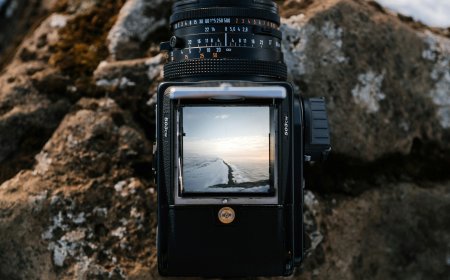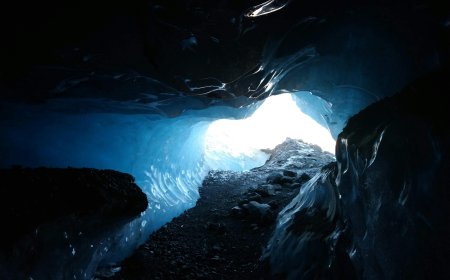Travel guidelines to remote areas
Exploring remote areas requires planning and caution. Make sure to prepare well and be ready for different conditions, and don't forget to appreciate and respect the nature of the environment.

Exploring remote areas requires planning and caution. Make sure to prepare well and be ready for different conditions, and don't forget to appreciate and respect the nature of the environment.
Travel guidelines to remote areas
Traveling to remote areas offers a unique and exciting experience, allowing travelers the opportunity to explore wilderness and connect with new cultures and communities. These areas are characterized by their stunning natural beauty and their distance from the hustle and bustle of urban life, attracting many people seeking to escape the daily routine and enjoy tranquility.
Despite the allure of remote areas, they require careful planning and preparation before traveling to them. It's important for travelers to be aware of the challenges they may encounter, such as the lack of basic services like electricity or running water, and sometimes limited phone or internet connectivity.
To enjoy a safe and enjoyable travel experience to remote areas, travelers should follow some important guidelines. For example, they should ensure they bring necessary emergency supplies, such as food, water, appropriate clothing, and basic medical equipment. They should also prepare for changing weather conditions and deal with potential risks such as accidents or injuries.
Furthermore, travelers should respect the local environment, culture, and traditions in the areas they visit, and interact with local residents with respect and appreciation. Positive interaction with local communities can contribute to cultural understanding and enhance the travel experience for everyone.
Traveling to remote areas can be a wonderful adventure, but it requires preparation and caution. By adhering to the above guidelines and preparing well, travelers can enjoy a unique and entirely enjoyable travel experience.
A unique experience and vital tips
The experience of traveling to remote areas is indeed unique and distinctive due to several factors that set it apart from traveling to popular urban destinations. In remote areas, travelers can experience tranquility and serenity away from the city's hustle and bustle and the noise of daily life. These areas are characterized by stunning natural beauty, from towering mountains and dense forests to vast plains and remote beaches, providing exceptional opportunities for exploration and enjoying nature.
However, with this unique experience comes the urgent need to take some vital tips to ensure the safety and comfort of travelers. First and foremost, travelers must plan their trip to remote areas carefully, including studying the location, weather conditions, available routes, and more. It is also essential for travelers to have essential emergency equipment, such as tools, food, and clean water, to deal with any emergencies that may arise.
Additionally, travelers should respect nature and the local environment, and behave with caution and respect during their experience in remote areas. They should refrain from actions that may harm the environment, such as disposing of waste irresponsibly or endangering the safety of local wildlife.
Travelers should be prepared to face challenges that may arise, whether due to harsh weather conditions or natural hazards such as wildlife. By exercising caution and following proper guidelines, travelers can enjoy a unique and unforgettable travel experience in remote areas, discovering the beauty of nature and engaging with local cultures safely and comfortably.
Traveling safely and professionally
Traveling safely and professionally to remote areas requires thorough planning and dealing with a variety of factors that can impact the travel experience. Given the nature of remote areas and their distance from infrastructure and urban facilities, it becomes more challenging and requires special attention to detail and preparation.
First and foremost, travelers must conduct thorough research about the area they intend to visit. They should understand the natural and geographical conditions of the area, such as weather patterns, climate, and terrain. They should also familiarize themselves with potential risks such as wildlife or severe natural phenomena like floods or earthquakes.
Secondly, travelers should be well-prepared by stocking up on essential emergency supplies. They should have an adequate supply of water and non-perishable food that can be stored for an extended period, in addition to first aid equipment and survival tools such as tents and signaling devices.
Thirdly, travelers should communicate with local authorities or relevant agencies before traveling to remote areas. These conversations with locals or local authorities can provide valuable information about current conditions in the area and potential warnings.
Travelers should respect the local environment and the culture of the local inhabitants. They should treat nature with caution and respect, and they should also refrain from actions that may cause harm to the surrounding environment.
Traveling to remote areas requires thorough preparation and planning, as well as respect and attention to the surrounding environment and personal safety. By following these tips and guidelines, travelers can enjoy a safe and enjoyable travel experience in remote areas.
How to enjoy remote areas without compromising safety
To enjoy remote areas without compromising safety, travelers must take several steps and precautions before and during their trip to these attractive areas, far from urban life.
1. Pre-planning: Travelers should start pre-planning their trip to remote areas well in advance. This includes studying the area, understanding the natural, climatic, and terrain conditions, as well as identifying routes to the location and available means of transportation.
2. Preparation and gear: Travelers should be well-prepared to face challenges in remote areas. They should carry essential emergency equipment such as first aid kits, survival tools, and emergency signaling devices.
3. Personal safety equipment: Travelers should wear appropriate clothing and footwear for hiking in nature and use hats and sunglasses to protect themselves from the sun and other environmental factors.
4. Contacting local authorities: Travelers should communicate with local authorities or local tourism offices to get information about current conditions in the area and specific warnings.
5. Respecting nature and local culture: Travelers should behave with caution and respect in remote areas, refraining from actions that may harm the environment or negatively affect local culture.
6. Exercising awareness and appreciation: Travelers should be prepared to deal with any unexpected situations or emergencies that may occur in remote areas and act with awareness and appreciation for their surroundings.
By following these tips and taking necessary precautions, travelers can enjoy a fun and safe experience in remote areas without compromising safety.
Exploring the beauty of remote areas
Exploring the beauty of remote areas presents an exhilarating and distinctive experience, allowing travelers the opportunity to discover nature in all its splendor away from the hustle and bustle of urban life. Remote areas are characterized by breathtaking and diverse landscapes, including towering mountains, lush valleys, dense forests, pristine lakes, and enchanting beaches.
When embarking on an exploration journey to remote areas, this discovery provides travelers with a chance to enjoy the tranquility and serenity that isolation from the busy daily life offers. They can listen to the natural silence and relax under a starry sky free from light pollution, making their experience akin to a dream.
Furthermore, exploring the beauty of remote areas enables travelers to directly connect with nature and its thrilling experiences, such as spotting wildlife in its natural habitat and enjoying sightings of birds and wild plants. They can also engage in activities like hiking, mountain biking, camping, fishing, and more, adding a touch of adventure and excitement to their experience.
Through exploring the beauty of remote areas, travelers can also enjoy interacting with local cultures and experiencing simple and traditional ways of life. They can learn about the customs and traditions of local residents and participate in traditional activities such as local celebrations, handicraft making, and traditional cuisine.
In these ways, travelers can explore the beauty of remote areas through various means and diverse experiences, making their journey an unforgettable experience and a stimulus for the soul, mind, and body.
Traveling to remote areas
Traveling to remote areas is an enjoyable and thrilling experience that allows travelers to explore the beauty of nature and escape the hustle and bustle of daily city life. Remote areas are known for their tranquility and serenity, offering opportunities to enjoy the wild nature in all its splendor and diversity.
When traveling to remote areas, travelers find themselves in a completely different world from what they are used to in urban life. They can wander through dense forests, climb towering mountains, explore picturesque valleys, or enjoy the beauty of remote beaches. They can also interact with wildlife and observe wild animals in their natural habitat, such as deer, bears, eagles, and fish.
However, traveling to remote areas requires careful preparation and planning. Travelers should be aware of the weather conditions in the area they intend to visit and carry necessary equipment to deal with any emergencies, such as tents, basic medical supplies, and food provisions.
Additionally, travelers should communicate with local authorities or official agencies before traveling to remote areas to obtain information about current conditions and potential warnings. They can also get advice and guidance from local residents about safe camping spots, swimming areas, or any other activities they wish to engage in.
Traveling to remote areas can be a wonderful and enjoyable experience for travelers looking to escape the daily routine and explore the beauty of wild nature. With proper planning and preparation, they can enjoy a safe and exciting travel experience in these remote regions.
Safety, respect, and adventure
Safety, respect, and adventure are crucial factors when traveling to remote areas, where travelers must ensure their own safety and the safety of others while respecting nature and local culture, all while enjoying the unique adventure in these beautiful and distant areas.
1. Safety
- Travelers should take all necessary precautions to ensure their safety and the safety of others when traveling to remote areas. It is essential to carry basic emergency equipment such as first aid kits, survival tools, food rations, and clean water.
- Travelers should also adhere to safety rules and follow local guidelines to avoid potential risks, such as staying away from restricted areas or traveling during specified times.
2. Respect
- Travelers should respect nature and the local environment in remote areas, avoiding actions that may harm them, such as irresponsible waste disposal or damaging natural properties.
- Travelers should also respect local culture and traditions, treating local residents with respect and appreciation, avoiding any disturbance or violation of their rights.
3. Adventure
- When committed to safety and respect, travelers can enjoy adventures in remote areas safely. They can experience activities such as hiking, mountain biking, camping, and exploration trips, adding a touch of excitement and fun to their experience.
- Travelers can also explore remote areas using various means such as boats, small aircraft, or on foot, adding to the appeal of the experience and giving them the opportunity to discover the beauty of nature uniquely.
Safety, respect, and adventure are essential elements when traveling to remote areas. By adhering to these factors, travelers can enjoy an exciting and enjoyable travel experience, discovering the beauty of nature in a safe and responsible manner.
Summary
Guidelines for traveling to remote areas aim to direct travelers to enjoy a safe and exciting travel experience in the wilderness and areas far from urban life. Among the important guidelines are carefully planning the trip, carrying necessary emergency equipment, and communicating with local authorities to obtain information about current conditions in the area. It is also important to respect the local environment and culture, and avoid actions that may harm nature. By following these guidelines, travelers can enjoy a fun and safe travel experience in remote areas.
Sources
1. World Health Organization (WHO)
- Provides guidance and advice on travel and health in remote areas.
2. Centers for Disease Control and Prevention (CDC)
- Offers information on travel, diseases, and recommended vaccinations for travel to remote areas.
3. United Nations World Tourism Organization (UNWTO)
- May provide general information about travel and safety in remote destinations.
What's Your Reaction?












































































































